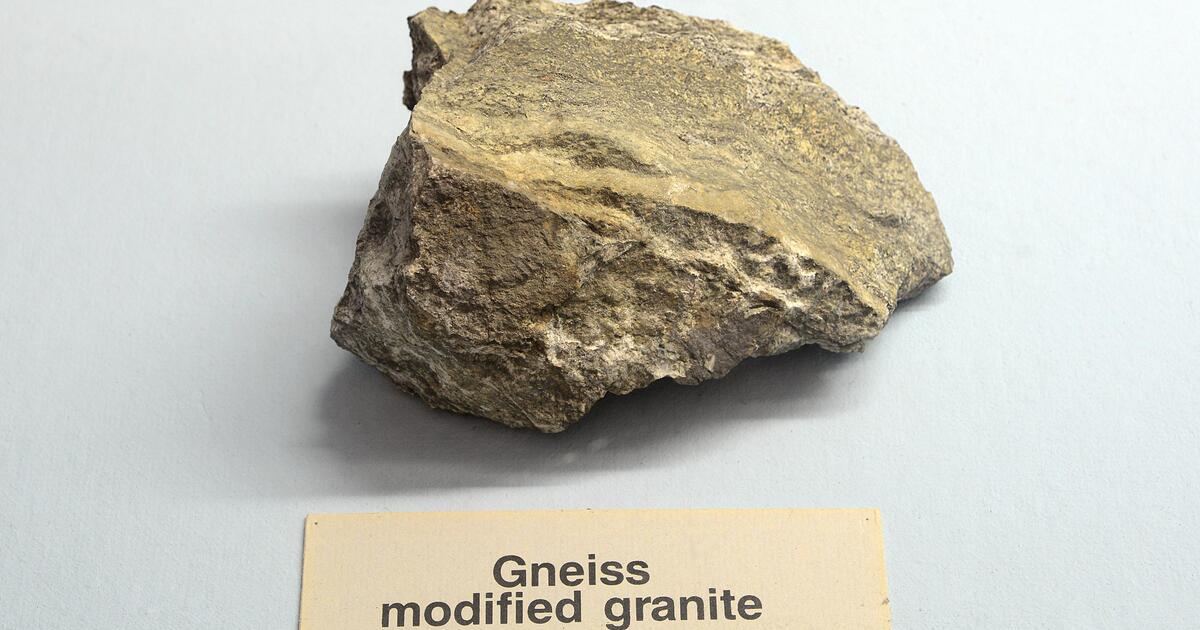A photograph of polished gneiss from the stock of a countertop vendor.
Igneous rocks like granite can become gneiss.
Gneiss can turn into an igneous rock if it is melted.
Granite is a light colored igneous rock with grains large enough to be visible with the unaided eye.
These rocks primarily consist of quartz feldspar and mica.
Granite is composed mainly of quartz and feldspar with minor amounts of mica amphiboles and other minerals this mineral composition usually gives granite a red pink gray or white color with dark mineral.
All rocks undergo a series of processes called the rock cycle where one type of rock changes into another.
Metamorphic rocks form from heat and pressure which changes the original or parent rock into a completely new rock.
If this occurs it will now be classified as a granite.
Not all gneiss is obtained from granite and there are also diorite.
The parent rock can be either sedimentary igneous or even another metamorphic rock.
The end product of their metamorphism is a banded rock with a mineralogical composition like granite.
Paragneiss is gneiss derived from sedimentary rock such as sandstone.
Gneiss ˈ n aɪ s is a common and widely distributed type of metamorphic rock gneiss is formed by high temperature and high pressure metamorphic processes acting on formations composed of igneous or sedimentary rocks orthogneiss is gneiss derived from igneous rock such as granite.
The mineral constituents that create these rocks get recycled over time.
Granite is an igneous rock whereas gneiss is formed after metamorphosis of an existing igneous rock.
If the chemistry and conditions are right granite forming minerals can precipitate.
More fleshed out fuller and still correct answer.
Gneiss is a metamorphic rock granite is an igneous rock and sandstone is a sedimentary rock.
Granite gneiss can also form through the metamorphism of sedimentary rocks.

